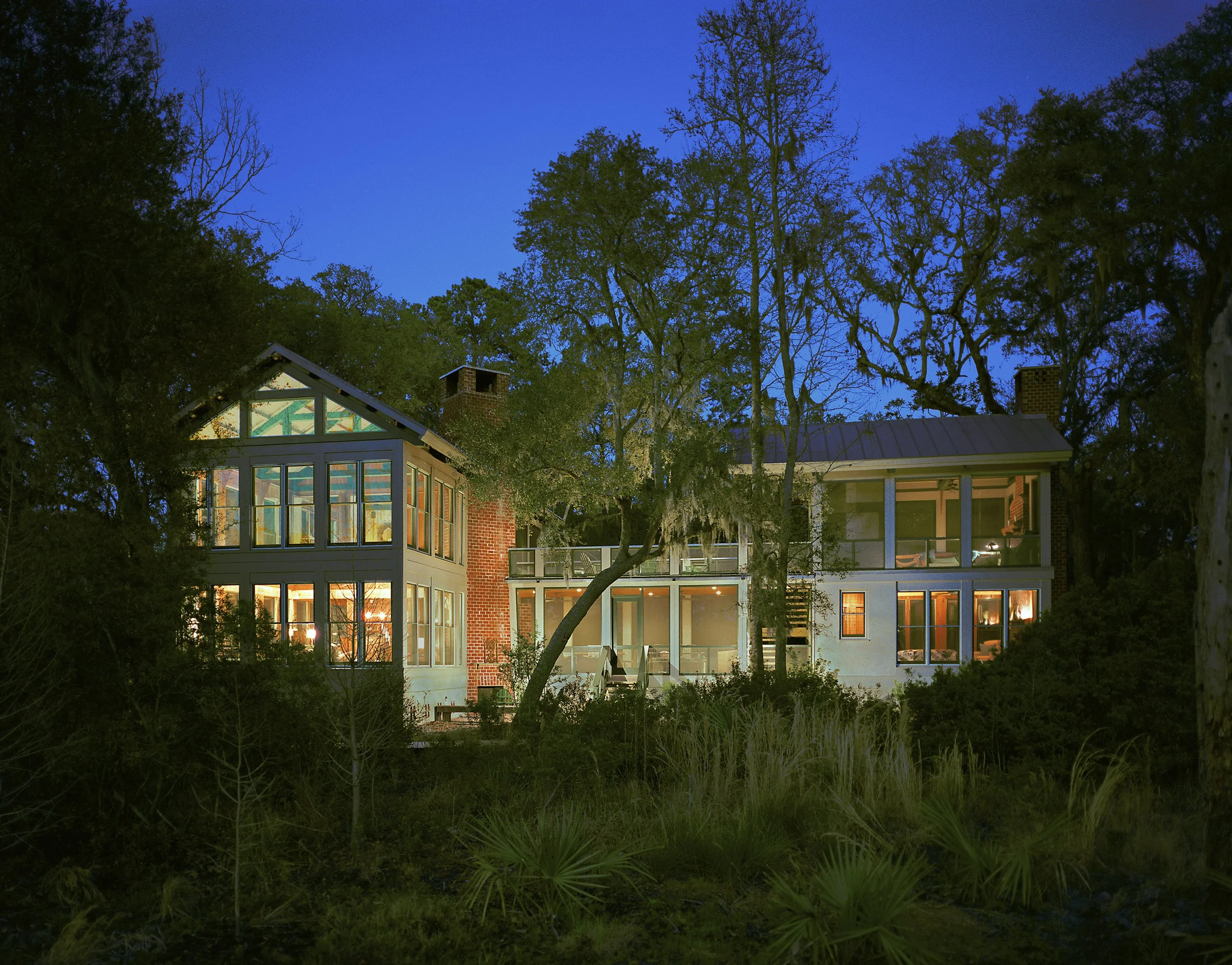Modern Takes on Southern Vernacular: A Fresh Voice for Lowcountry Living
Southern vernacular architecture is rooted in pragmatism: its forms, materials, and spatial logic evolve from climate, landscape, and way of life. In our coastal Lowcountry, traditions like raised piers, deep porches, narrow floorplates, and cross‑ventilation were not aesthetic afterthoughts; they were essential strategies for comfort and resilience.
Yet clients today expect homes that feel current: clean lines, open interiors, sustainable systems, effortless connections between inside and out. The challenge is to reinterpret vernacular traditions in a contemporary idiom, rather than abandoning them.
Here are a few ways we bring modern spirit to Southern vernacular:
Refined form and proportion
Instead of literal historical mimicry, we distill the logic of vernacular forms. We maintain a narrow building depth or simple massing to preserve cross‑ventilation potential. We use generous porches and large overhangs to shade facades.
Seamless indoor‑outdoor living
Large operable windows, sliding doors, and screened porches blur boundaries while controlling heat gain and rain intrusion. A screened porch becomes the home’s most used room, shaded and breezy, year-round. Every house needs a great porch, as Rick Bragg said, “Some say that the kitchen is the heart of a home, but the porch is its soul.”
Integrated performance systems
Contemporary vernacular homes must do more than look; they must perform. We incorporate passive strategies with a tight building enclosure and intelligently sized HVAC systems. We prioritize durability, resilience, and long‑term comfort.
Respecting context, not copying it
A modern vernacular home should respond to its site, taking into account solar orientation, breezes, topography, and views. The building should feel thoughtful, not derivative. Each commission becomes a unique expression, not a catalog repeat.
Client benefit: You gain a home that reads as timeless yet current, one that honors regional precedent while delivering modern comfort, low maintenance, and resilience against heat, humidity, and storms.

